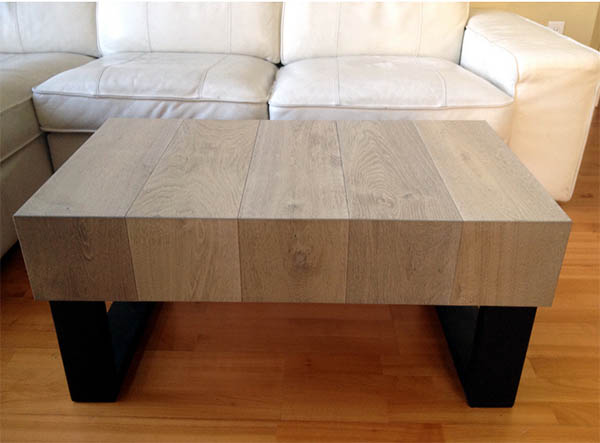
Amy Savoie got into woodworking through her college job – she was looking for something that paid well, and her father brought her on for the summer at the company where he worked building hand rails.
Although she graduated from Alberta College of Art and design with a major in jewelry and metalsmithing, Amy said, “I saw my true passion was working with wood.” Upon graduation, she “bought a truck and some tools” and went to work full-time for the hand rail company.
Since then, she has also done contract work and installation, as well as furniture and design work. Now living in British Columbia, she’s employed at a high-end flooring company, where she does the stairs and custom mill work, while also building her own furniture on the side.
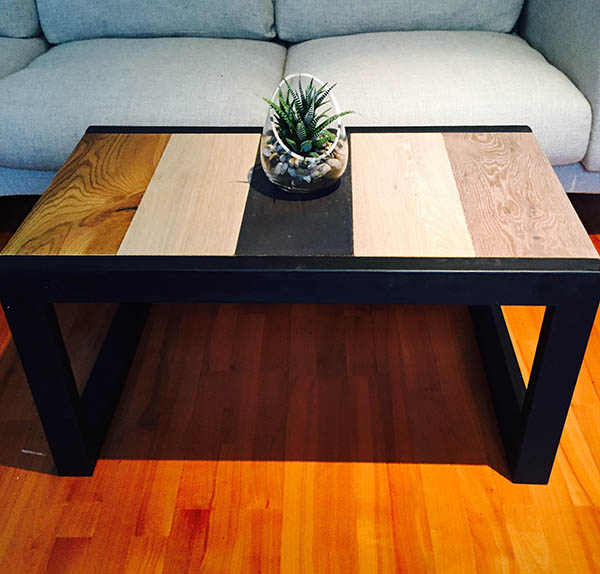
“My soul needs to be working with my hands,” Amy said, noting that her educational background continues to influence her in terms of how she approaches her work. “I’m working with my hands, putting things together,” she said. “My process is posing a design challenge and then coming up with a way to make that work.”
For instance, Amy said, she’s always been interested in multifunctional pieces. Back in art school, that manifested itself in her design of a bracelet that folded up into a pendant. In furniture, “I like it to have more than one purpose. I’ve always had a real interest in multifunctional furniture, things that transform or serve more than one purpose.”
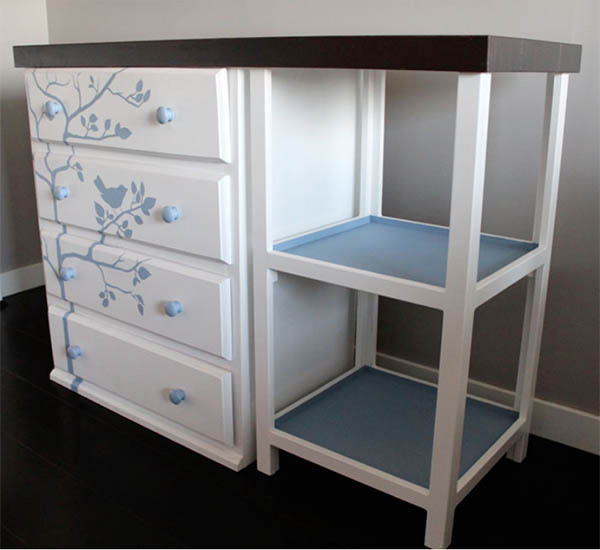
One of her furniture pieces that fits that bill is the Change Table/Dresser she built for her first son. Starting with a dresser purchased on Craigslist, Amy built the accompanying changing table stand and connecting top – from hardwood flooring material that her condo owners at the time were storing in part of her storage space and gave her permission to use.
Such repurposing of material is another hallmark of Amy’s work. A bonus of her full-time job is getting to use some of the offcuts from jobs – but, “if you’ve got leftover wood, the design challenge is you only have pieces of a shorter length,” she said.
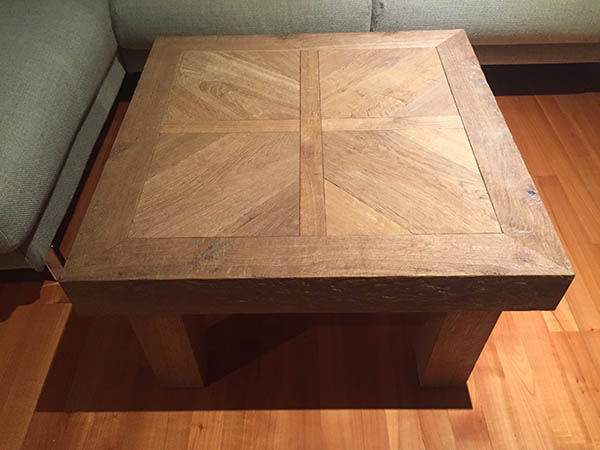
“Say we need a set of 30 box treads, all four feet long, and the boards are all six feet long. You’ve got a whole pile of two-foot offcuts.” Plus, since the wood is from flooring jobs, it’s often all prefinished in a certain color. Amy enjoys figuring out a way to work with materials like this.
She’s used offcuts to make a pattern on a coffee table, mitering all the pieces together to make them look like solid wood. “On a similar job, I had a lot of short pieces of solid wenge, but I didn’t have any long enough to do what I wanted, so I did a scarf joint and hid it so you didn’t see and it looked like one solid piece.”
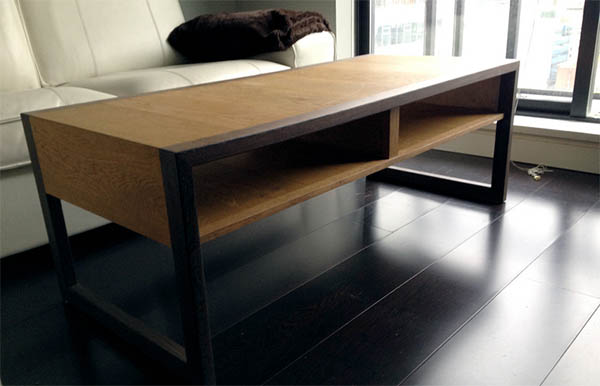
Another college experience that continues to impact Amy’s work is the semester she spent as an exchange student at Australian National University in Canberra. For that semester, she switched her major to woodworking, and the program mainly focused on building a traditional ladderback wood chair, completely with hand tools.
The chair, Amy said, started out as a stump, and the students learned to build it using an axe, a spokeshave, a hand-cranked drill and a foot-powered lathe. “At the time, I was working at a job in the trades, and we were pushed to do everything so efficiently,” Amy said. “I thought it was so impractical; it felt like a step back. Now, later on in my career, I feel an appreciation for where the craft has come from. It was an incredible experience, building everything by hand.”
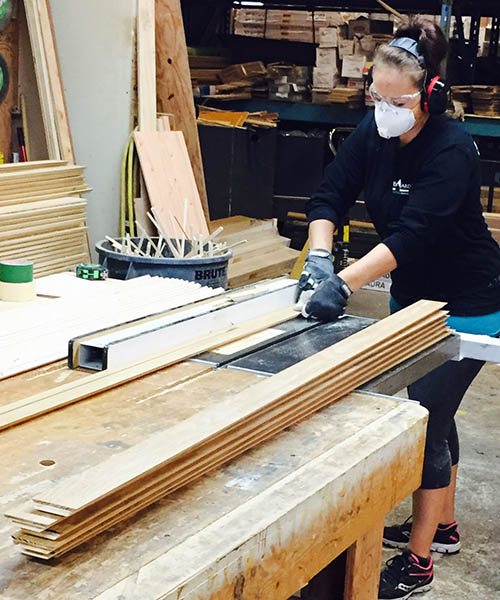
At this point in her career, Amy is interested in sharing her own experience with others – particularly women. “I’ve met many women at many different times in my life, who just has so much excitement about a woman in the trades, working with tools, so I started to think about teaching. Most women never thought about the possibility as something they could do.”
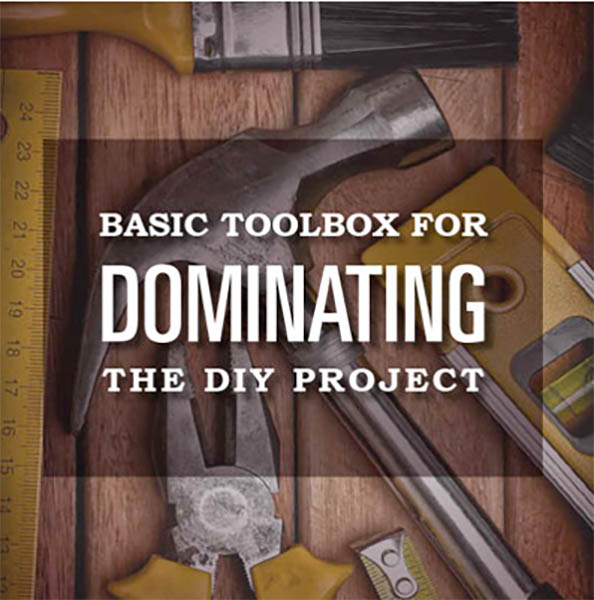
Having taught some apprentices in person, Amy is gearing up for online courses – she’s filming the setup of her shop – as well as hoping to offer some local, in-person, project-based workshops. Her Woodshop Girl website, where she currently offers a free download of a “Toolbox Guide,” will serve as the hub for these offerings.
“Once the momentum gets going, I want to give people a way they can understand things,” Amy said. “I’m living proof that it’s a realistic thing for a woman to find a decent living in the trades.”





